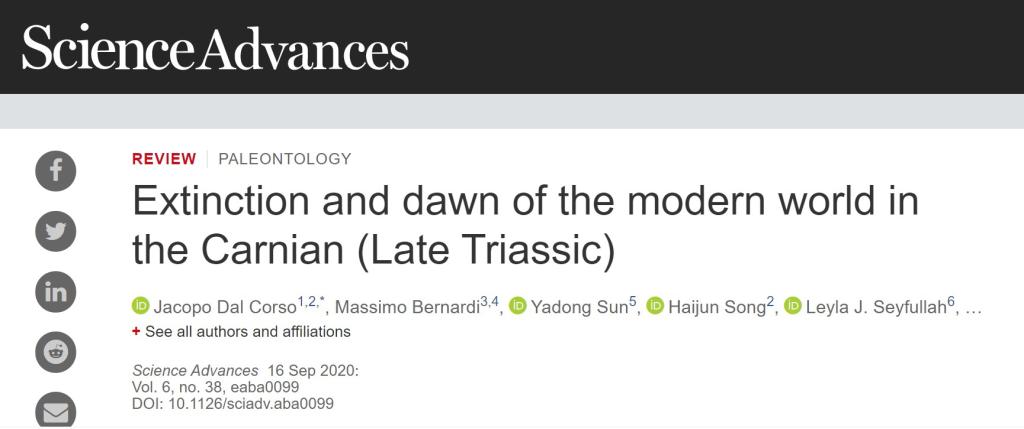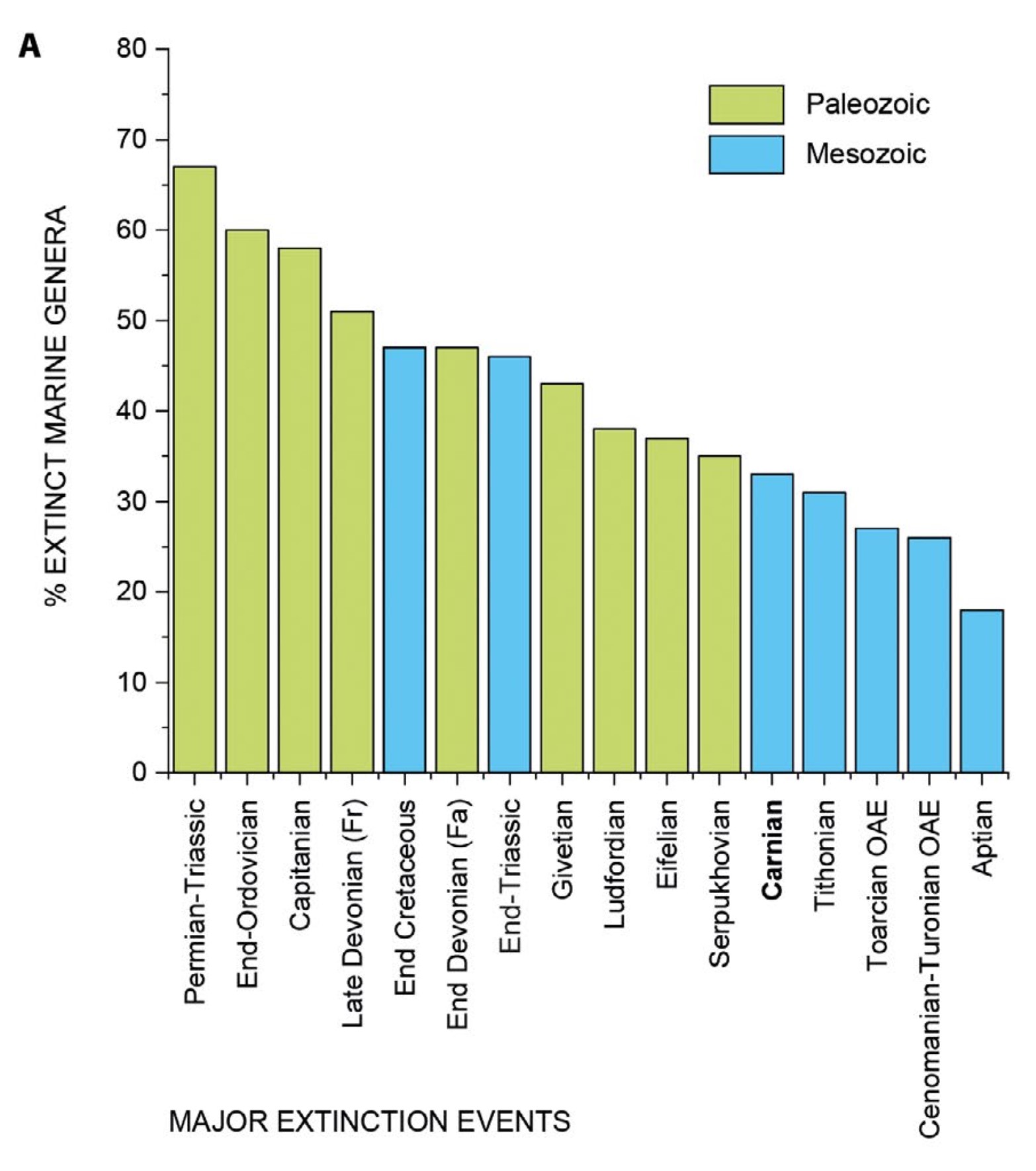Recently, China-EU research team led by Jacopo Dal Corso from the State Key Laboratory of Biogeology and Environmental Geology and Mike Benton from School of Geosciences, Bristol University published a review paper on the flood events in the Carney period in Science Advances, a world-famous comprehensive academic journal. This paper systematically summarizes the Kani flood event from the perspectives of research history, chronology, sedimentology, paleontology, paleoenvironment and paleoclimate, and points out the existing problems in the understanding on this event and the potential direction of following researches. Professor Jacopo Dal Corso from the State Key Laboratory of Biogeology and Environmental Geology is the first author and corresponding author, and Professor Michael J. Benton from Bristol University is the co-corresponding author.

The Carnian Pluvial Episode (Late Triassic) was a time of global environmental changes and possibly substantial coeval volcanism. The extent of the biological turnover in marine and terrestrial ecosystems is not well understood. Here, we present a meta-analysis of fossil data that suggests a substantial reduction in generic and species richness and the disappearance of 33% of marine genera. This crisis triggered major radiations. In the sea, the rise of the first scleractinian reefs and rock-forming calcareous nannofossils points to substantial changes in ocean chemistry. On land, there were major diversifications and originations of conifers, insects, dinosaurs, crocodiles, lizards, turtles, and mammals. Although there is uncertainty on the precise age of some of the recorded biological changes, these observations indicate that the Carnian Pluvial Episode was linked to a major extinction event and might have been the trigger of the spectacular radiation of many key groups that dominate modern ecosystems.
The research was funded by the CUG "100 Talents Program" and the Natural Science Foundation (China, Britain and Germany).

FIG. 1 Marine extinctions during the CPE.
(A) Comparison of extinction rates of all marine genera during the CPE with those of major Phanerozoic mass extinction events [from figure 2 of (
42
)]. The data compilation reveals that the CPE was a severe mass extinction, bigger than the well-known early Jurassic and Cretaceous extinctions

Fig. 4 Terrestrial extinctions and originations.
Major biological changes among vertebrates, plants, and insects, discussed in the paper, in relation to the C-isotope and T variations recorded during the Carnian (Fig. 1). The most notable pattern that can be observed is a major diversification event that affected many groups in the late Carnian (Tuvalian), i.e., just after the main negative C-isotope excursions that mark the CPE. Most of the amber, which indicates stressed conditions, is dated to the latest Julian when biostratigraphic data allow a good age control (88,89). Data are summarized from the following literature and the references therein. Trackmaker assemblage variations from (10) are as follows. Dinosauria: red star, detrital zircon age for Santa Maria Formation (Brazil); green star, U-Pb age of Ishigualasto fauna (34,68,115,116). Dycinodonts: (117,118). Crocodilomorpha: (70,71). Phytosaurs: (119,120 ). Rhynchocephalia: (73,74). Mammals: (80–82). Turtles: (75,77–79). Plants: (83). Amber: (88). Insects: (91 – 93). For the δ13C and T records, refer to Fig. 1. Stutt. Fm, Stuttgart Formation; EU, Europe; Ger, Germany.

Fig. 5 Wrangellia LIP.
Stratigraphy of the Wrangellian succession in Vancouver Island (Canada) and Wrangell Mountain (Alaska, USA) reconstructed from (102). The age of the end of Wrangellia volcanism can be solidly fixed with ammonoid biostratigraphy to the early Tuvalian, while the onset could have a late Ladinian age given the presence of Daonella bivalves below the basalt pile (see discussion in the main text). Fm., Formation.
Authors:Dal Corso, J.*, Bernardi, M., Sun, Y.D., Song, H.J., Seyfullah, L. J., Preto, N., Gianolla, P., Ruffell, A., Kustatscher, E., Roghi, G., Merico, A., Hohn, S., Schmidt, A. R., Marzoli, A., Newton, R. J. Wignall, P. B., Benton, M. J.
Title:Extinction and dawn of the modern world in the Carnian (Late Triassic).
Source: Sciences Advances, 6: eaba0099.
Available online: 2020